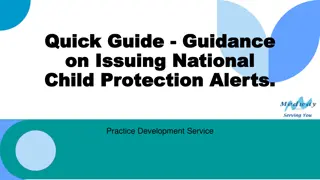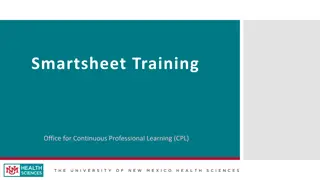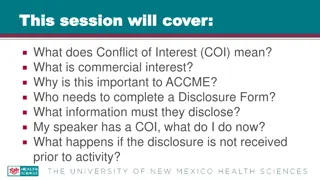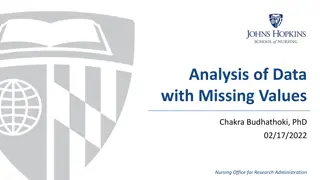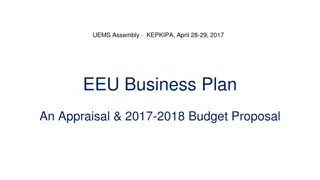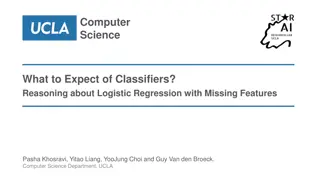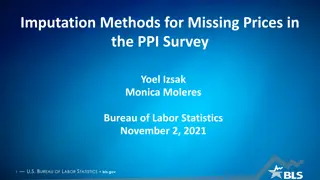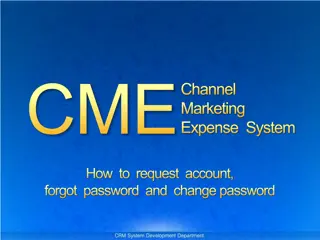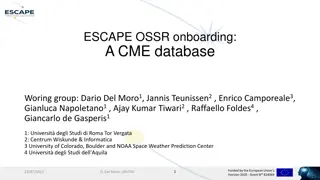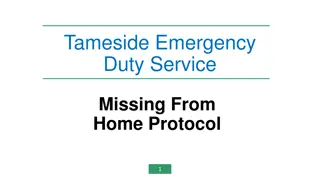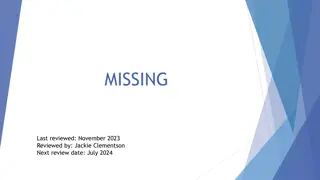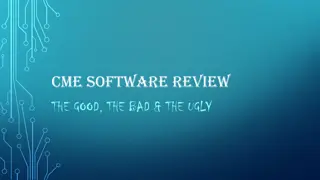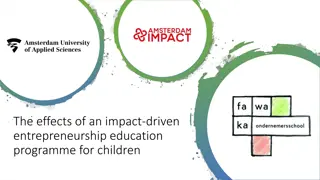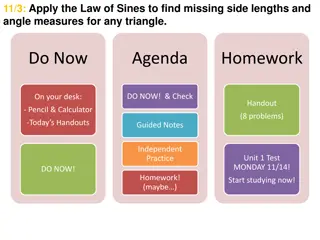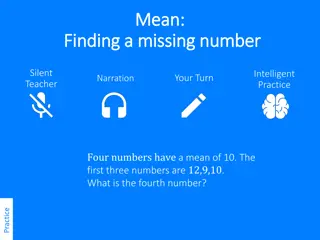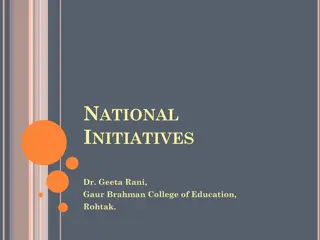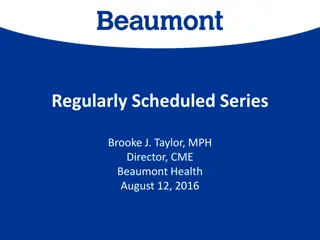Understanding Children Missing Education (CME) and its Impact
Explore the statutory duty and purpose of identifying children missing education. Learn about the distinction between children missing education and those missing from education, along with reasons why children may fall into the CME category. Discover the responsibilities of educational provisions, key trends, and the role of local authorities in addressing CME cases effectively.
Download Presentation

Please find below an Image/Link to download the presentation.
The content on the website is provided AS IS for your information and personal use only. It may not be sold, licensed, or shared on other websites without obtaining consent from the author. Download presentation by click this link. If you encounter any issues during the download, it is possible that the publisher has removed the file from their server.
E N D
Presentation Transcript
CHILDREN MISSING EDUCATION Mansoora Karimuddin Children Missing Education Lead Officer Children, Families and Education Directorate Luton Borough Council
Overview Purpose/Statutory Duty Who are CME Why are CME Responsibility of educational provisions To understand the responsibility of LA in relation to CME School Attendance Orders Key Trends Conclusion/Questions
Purpose of the Duty Provision of education Safeguarding Ensure that children not receiving, or at risk of not receiving, a suitable education are identified quickly Effective tracking systems and support arrangements are in place for them to return to education.
Children Missing Education - A Statutory Duty Section 436 A of the Education Act 1996 (added by section 4 of the Education & Inspection Act 2006 Section 437-443 of the Education Act 1996 Education Act 1996 Education Act 2006 Education (Pupil Registration) (England) Regulations 2006 Education (Pupil Registration) (Amendment) (England) Regulations 2016.
Distinction between Children Missing Education & Children missing from education
Children Missing Education The DFE defines CME as: Children of compulsory school age who are not registered pupils at a school and are not receiving suitable education otherwise than at a school
Why CME Simply move and their families do not tell either the new or old authorities Unable to attend their preferred school as no places are available and do not take up the offer of an alternative place Never enter the education system because they fail to start appropriate provision at the start of compulsory school age Withdrawn by their parents who elect to educate at home and both parents and the school fail to formally notify the local authority.
Why CME 2 Cease to attend school due to disputes, parental dissatisfaction, unofficial exclusion or removal from school roll Have fled the area as part of a planned/unplanned safety arrangement Fail to complete a transition between providers Move area and do not register with a school Enter the country and do not register with a school Move into or out of the Looked after Children (LAC) system without prior notice or planning Excluded or withdrawn from independent schools.
Who are these children and why do they matter? Children who may already be vulnerable are more likely to become a child missing education At risk of not achieving their potential in education At risk of being out of education, training and employment in later life At risk of physical, emotional or psychological harm Children have a right to education and to protection from all forms of violence, abuse, neglect and exploitation
Multi Agency Procedures 1 CME Policy that underpins the multi-agency work Identification of CME through the multi-agency referral process Tracking of CME using local and national databases Removal from roll and Common Transfer File (CTF) guidance Re-engaging children out of education through action planning and supporting to secure educational provision Partnership working with other professionals and information sharing where necessary Prioritisation of referrals where there are welfare or child protection concerns.
Multi Agency Procedures 2 Role of the Local Authority CME Officer: Co-ordination of referrals Monitoring Compliance Checking Process Maintaining CME Database Advice/Training Casework School Attendance Orders Nationwide CME Enquiries/S2S Database Reporting and Data Analysis FOI requests/ Ofsted Inspections
Multi Agency Procedures 3 Education providers: Investigate unexplained absences/Identifying CME and completing initial/reasonable enquiries Reporting safeguarding concerns Removal from roll procedures - Requirements for all schools to inform their LA when they are about to delete a pupil s name from the admission register under all fifteen grounds Making a CME referral to the LA Common Transfer File requirement/Lost Pupil Database on S2S
Safeguarding The CME procedures do not replace any of the Local Safeguarding Board (LSCB) multi agency procedures and are to be used in conjunction with these procedures Existing safeguarding procedures and mechanisms for reporting and recording child protection concerns are to be observed at all times whilst understanding the relationship between the increased risks to children who are missing education IF AT ANY TIME A SCHOOL HAS SAFEGUARDING CONCERNS, IN LINE WITH LUTON LSCB THRESHOLD FRAMEWORK, THEY MUST REPORT THIS TO THE MULTI AGENCY SAFEGUARDING HUB ON 01582 547653 OR refer to MASH@luton.gov.uk
School Attendance Orders (SAO) Out of education children in the local authority s area/ Failed Home education/Elective Home Education Not Suitable Failing to register the child at a school/provision School Attendance Order Notices School Attendance Orders, requiring the parent (s) to register the child with the named school Legal action due to failing to comply with an SAO Referral to MASH due to Educational Neglect
Notification routes CME may be identified through: School records and monitoring systems Services working with children and young people of compulsory school age Tracking Luton enquiries from other local authorities Out of education referrals school admissions/ Access to Education/ other services
Identification Making a referral By secure email to cme@luton.gov.uk For children NOT REGISTERED WITH A SCHOOL/PROVISION - Completing an Out of Education Referral Form www.Luton.gov.uk/education For children leaving a Luton school without securing a school place completing a CME Pro-forma www.Luton.gov.uk/education Will be moving to School Portal via EYES
Further information CME@luton.gov.uk CME lead officer 01582 548180 CME policy and procedures/referral forms https://www.luton.gov.uk CME guidance www.education.gov.uk Keeping children safe in education - statutory guidance
Key Trends Increase in overall referrals Pupils placed in temporary accommodation Children of Gypsy, Roma & Traveller (GRT) families Increase in school attendance order notices Over-representation of minority ethnic groups Demand for school places Moving abroad
Conclusion The impact of CME function: Reduction in the number of children being out of education Supporting continuity of child s learning/education Inclusion/reduce exclusion Promoting early intervention Improving levels of educational attainment for CME Protecting vulnerable children and young people Improving opportunities in life.




